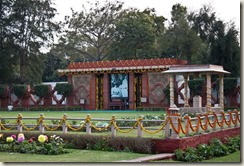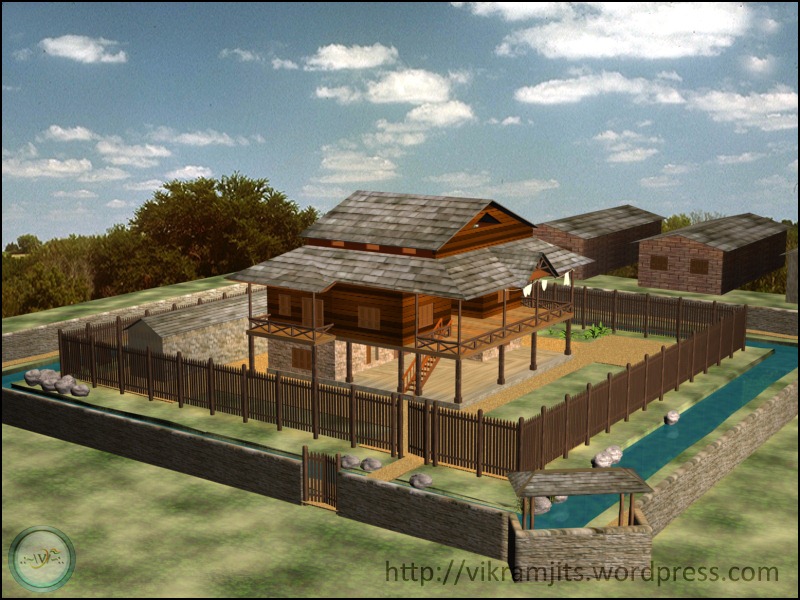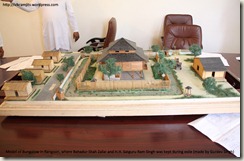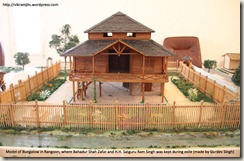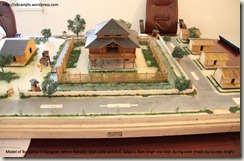Hazrat Kaki’s Dargah
HAZRAT KHWAJA QUTBUDDIN BAKHTIYAR KAKI, r.a., born in 1173 was an Islamic Dervish (Sufi Mystic) following Chisti Order of Sufism. He was born in Aush in Transoxiana (A region in central Asia corresponding approximately with modern-day Uzbekistan, Tajikistan and southwest Kazakhstan) and left his body on 27-11-1235 in Mehrauli, Delhi (INDIA), where he is buried.
Hazrat Sahab was disciple and spiritual successor of Gharib Nawaz Hazrat Khwaja Muinuddin Chishti (r.a.), one of the most famous sufi saints of world. Further, his most famous disciple and spiritual successor was Baba Farid, who in turn became the spiritual master of Delhi’s noted Sufi saint, Nizamuddin Auliya, who himself was the Master of Amir Khusro and Nasiruddin Chirag-e-Delhi. His name was Bakhtiyar and titles were Qutub-Ul-Aqtab (Chief of the great saints) and the Qutub-ul-Islam (Chief of Islam).
According to his biography mentioned in, Ain-i-Akbari , written by Akbar’s vizier, Abu’l-Fazl ibn Mubarak, he was the son of Kamalu’ddin Musa, whom he lost at a young age, and came from Ush, a small town in Farghana (present Fergana Province in eastern Uzbekistan, part of historic Transoxania). The name Kaki was attributed to him by virtue of a keramat(miracle) that emanated from him at a later stage of his life in Delhi . He also belonged to the direct lineage of the Prophet Muhammad, descending from Hussain ibn Ali. Khawaja Bakhtiyar Khaki was one and half years old when his father died . His mother arranged for his education.
About the place
Few clicks from the place…
After we took these photos, some noble person from the shrine told us that photos should not be taken at this sacred place. So we stopped with further photography, and uploading only what we clicked.
We went straight from Qutub Minar, and passed small congested streets of Mehrauli. Though the main entrance of Dargah is on other side, we reached the back side of Dargah, which is also known as the Ajmeri Side or the Ajmeri Gate. It is adjacent to Zafar Mahal, built by Akbar Shah II. Also, next to the shrine is Moti Masjid, the private mosque of royal family residing in Zafar Mahal. There are several other graves adjacent to Dargah, including that of Akbar II.
Moti Masjid and other Tombs
(left) Tomb of Bahadur Shah I near Moti Masjid, next to Dargah
(right) Other graves in the premise including Akbar Shah II, Shah Alam II and Mirza Fakruddin (son of Bahadur Shah Zafar II), with Moti Masjid in background. The gumbad of Hazrat Kaki’s Dargah is also visible (with ladder)
Moti Masjid (three Gumbads) and Hazrat Kaki’s Dargah (bigger gumbad) is visible from Zafar Mahal with Qutub Minar at Distance (between both). On right side, below that pillar (under renovation), lies the grave of Bahadur Shah I (in marble enclosure) and Bahadur Shah II (outside enclosure). Ruins of walls of Zafar Mahal are also visible.
Moti Masjid, next to Zafar Mahal, and Hazrat Bakhtiyar Kakai’s Dargah
Phoolwalon-ki-sair Festival
The Dargah shrine of Qutbuddin Bakhtiar Kaki has also been the venue of the annual Phoolwalon-ki-sair Festival (Festival of flower-sellers) in autumn, which has now become an important inter-faith festivals of Delhi .
The festival has its origins in 1812, when Queen Mumtaz Mahal, wife of Mughal Emperor Akbar Shah II (r. 1806-1837) made a vow to offer a chadar and flower pankha at the Dargah and a pankha at the Yogmaya Mandir, also at Mehrauli, if her son Mirza Jehangir, who after inviting the wrath of Sir Archibald Seton, the then British Resident of the Red Fort, was exiled to Allahabad, returned safely. And as the legend goes he did, and so began the tradition henceforth .
Incidentally, Akbar Shah II is now buried in nearby a marble enclosure, along with other Mughals, Bahadur Shah I (also known as Shah Alam I) and Shah Alam II [1]. An empty grave also known as Sardgah of the last Mughal Emperor Bahadur Shah Zafar, can also be found here, as he had willed to be buried next the famous shrine, as did his previous Mughal predecessors, though unfortunately after his exile to Rangoon in Burma, he never returned and died there, talks of bringing back his remains here have been raised in the past, from time to time .
How to reach…
Go straight from Qutub Minar towards Mehrauli Market, crossing Mehrauli Bus Stand. That straight road leads to Hazrat Kaki’s Dargah.
More stuff coming up…

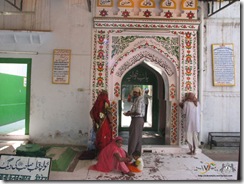


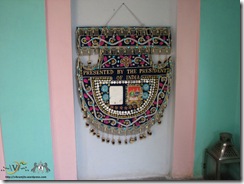




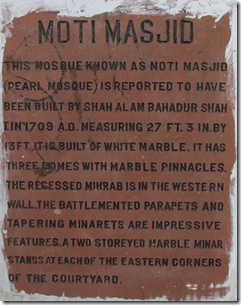


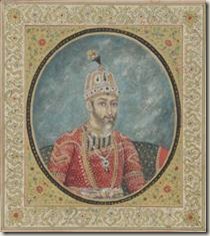 It meant, Emperor Shah Alam’s rule is from Delhi (Red Fort) to Palam (present day Delhi Airport) only. Shah Alam II’s son, Akbar Shah II was the puppet king and Archibald Seton, a Scottish East India Company Administrator was the appointed Officer in Red Fort. Next in line to throne, Crown Prince Mirza Jahangir was against British way of working. One day, this reckless young prince of 19 insulted Seton by calling him Lullu. Seton did not react then. Perhaps he did not understood the meaning of the word. Few days later, when Seton was returning from court, Mirza Jahangir, sitting on the roof of Naubat Khana, fired a shot at him, missing Seton completely. While Seton escaped unhurt, his orderly lost his life. Angry with this, British arrested Mirza Jahangir and sent him to Allahabad fort. Back then, it was famous that a political prisoner, who is sent to Allahabad Fort, never returns alive.
It meant, Emperor Shah Alam’s rule is from Delhi (Red Fort) to Palam (present day Delhi Airport) only. Shah Alam II’s son, Akbar Shah II was the puppet king and Archibald Seton, a Scottish East India Company Administrator was the appointed Officer in Red Fort. Next in line to throne, Crown Prince Mirza Jahangir was against British way of working. One day, this reckless young prince of 19 insulted Seton by calling him Lullu. Seton did not react then. Perhaps he did not understood the meaning of the word. Few days later, when Seton was returning from court, Mirza Jahangir, sitting on the roof of Naubat Khana, fired a shot at him, missing Seton completely. While Seton escaped unhurt, his orderly lost his life. Angry with this, British arrested Mirza Jahangir and sent him to Allahabad fort. Back then, it was famous that a political prisoner, who is sent to Allahabad Fort, never returns alive.  The Mughal court tried its best to save him, but the administration was in British hands completely. Having failed at every door, Empress Mumtaz Mahal, mother of Mirza Jahangir came to the shrine of Sufi Saint Khwaja Qutubuddin Bakhtiyar Kaki (ra) in Mehrauli, Delhi. She took a vow that if Mirza Jahangir returns safely, she would offer a sheet (chadar) of flowers at the Dargah.
The Mughal court tried its best to save him, but the administration was in British hands completely. Having failed at every door, Empress Mumtaz Mahal, mother of Mirza Jahangir came to the shrine of Sufi Saint Khwaja Qutubuddin Bakhtiyar Kaki (ra) in Mehrauli, Delhi. She took a vow that if Mirza Jahangir returns safely, she would offer a sheet (chadar) of flowers at the Dargah. 
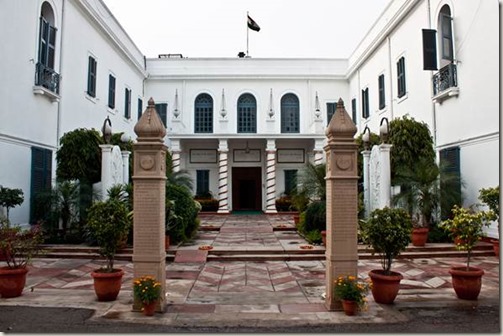
 On 9th September, 1947, when Mahatma Gandhi arrived Delhi from Kolkata, he was motored to Birla House, where he spent the remaining 144 days of his life. Next few days, he visited some refugee camps and met Lady and Lord Mountbatten. He had meetings with various leaders from different sects and discussed the growing tension between newly formed Pakistan and India. Given the pain of partition riots, he said on his birthday on 2nd October “It is more proper to offer condolences than to offer congatulations; I do not wish to live long.” Given the growing tension between India and Pakistan, Gandhi started another fast on January 13th 1948, which was broken with a glass of orange juice on January 18th from hands of Maulana Azad. The next day, during the prayers, a bomb exploded, which was meant for Gandhi’s assassination. On 27th January, he wrote ‘Congress Position’, suggesting that Congress should cease as political body and should devote to people’s service. He then left for Phoolwalon ki Sair festival, the Urs celebrations at the Dargah of Khwaja Qutubuddin Bakhtiyar Kaki (ra) in Mehrauli. On 30th January, he was walking through the lawn of Birla House for evening prayer, when Nathuram Vinayak Godse shot him.
On 9th September, 1947, when Mahatma Gandhi arrived Delhi from Kolkata, he was motored to Birla House, where he spent the remaining 144 days of his life. Next few days, he visited some refugee camps and met Lady and Lord Mountbatten. He had meetings with various leaders from different sects and discussed the growing tension between newly formed Pakistan and India. Given the pain of partition riots, he said on his birthday on 2nd October “It is more proper to offer condolences than to offer congatulations; I do not wish to live long.” Given the growing tension between India and Pakistan, Gandhi started another fast on January 13th 1948, which was broken with a glass of orange juice on January 18th from hands of Maulana Azad. The next day, during the prayers, a bomb exploded, which was meant for Gandhi’s assassination. On 27th January, he wrote ‘Congress Position’, suggesting that Congress should cease as political body and should devote to people’s service. He then left for Phoolwalon ki Sair festival, the Urs celebrations at the Dargah of Khwaja Qutubuddin Bakhtiyar Kaki (ra) in Mehrauli. On 30th January, he was walking through the lawn of Birla House for evening prayer, when Nathuram Vinayak Godse shot him.  Nathuram Godse was born on 19th May 1910 in Pune. Nathuram’s original name was Ramachandra Godse. Three boys born before him died in their infancy. However, a girl child survived and fearing the curse targeting male children, Ramachandra was brought up as a girl for first few years of his life. His parents pierced his nose and made him wear a ‘Nath’ (nose-ring). From this, he got his name “Ram with Nath” or NathuRam. It was only after his younger brother was born, his parents started treating him as a boy. Nathuram was a strong follower of Gandhi and respected him as a role model. In those days, he was a member of the Rashtriya Swayamsewak Sangh (RSS) and the Hindu Mahasabha. He later started a Marathi newspaper called Agrani. His fascination for Gandhi’s ideology ended when he found that Mahatma is favouring Muslims and which has made Hindus suffer. His last speech, which he delivered during his trial for Gandhi’s assassination could come as a surprise to many. He said that Gandhi’s control over congress was harming the nation and he is strongly responsible for the partition of India. Godse said “He was, paradoxical, as it may appear, a violent pacifist who brought untold calamities on the country in the name of truth and non-violence, while Rana Pratap, Shivaji and the Guru will remain enshrined in the hearts of their countrymen forever for the freedom they brought to them. The accumulating provocation of thirty-two years, culminating in his last pro-Muslim fast, at last goaded me to the conclusion that the existence of Gandhi should be brought to an end immediately.” Godse felt that when Muslim League began massacre of Hindus during the partition, Gandhi did nothing to save them except peace appeal and later fasted to support the same Muslim League. He held Gandhi & Nehru strongly responsible for India’s Partition and justified his act of killing Gandhi.
Nathuram Godse was born on 19th May 1910 in Pune. Nathuram’s original name was Ramachandra Godse. Three boys born before him died in their infancy. However, a girl child survived and fearing the curse targeting male children, Ramachandra was brought up as a girl for first few years of his life. His parents pierced his nose and made him wear a ‘Nath’ (nose-ring). From this, he got his name “Ram with Nath” or NathuRam. It was only after his younger brother was born, his parents started treating him as a boy. Nathuram was a strong follower of Gandhi and respected him as a role model. In those days, he was a member of the Rashtriya Swayamsewak Sangh (RSS) and the Hindu Mahasabha. He later started a Marathi newspaper called Agrani. His fascination for Gandhi’s ideology ended when he found that Mahatma is favouring Muslims and which has made Hindus suffer. His last speech, which he delivered during his trial for Gandhi’s assassination could come as a surprise to many. He said that Gandhi’s control over congress was harming the nation and he is strongly responsible for the partition of India. Godse said “He was, paradoxical, as it may appear, a violent pacifist who brought untold calamities on the country in the name of truth and non-violence, while Rana Pratap, Shivaji and the Guru will remain enshrined in the hearts of their countrymen forever for the freedom they brought to them. The accumulating provocation of thirty-two years, culminating in his last pro-Muslim fast, at last goaded me to the conclusion that the existence of Gandhi should be brought to an end immediately.” Godse felt that when Muslim League began massacre of Hindus during the partition, Gandhi did nothing to save them except peace appeal and later fasted to support the same Muslim League. He held Gandhi & Nehru strongly responsible for India’s Partition and justified his act of killing Gandhi. 
